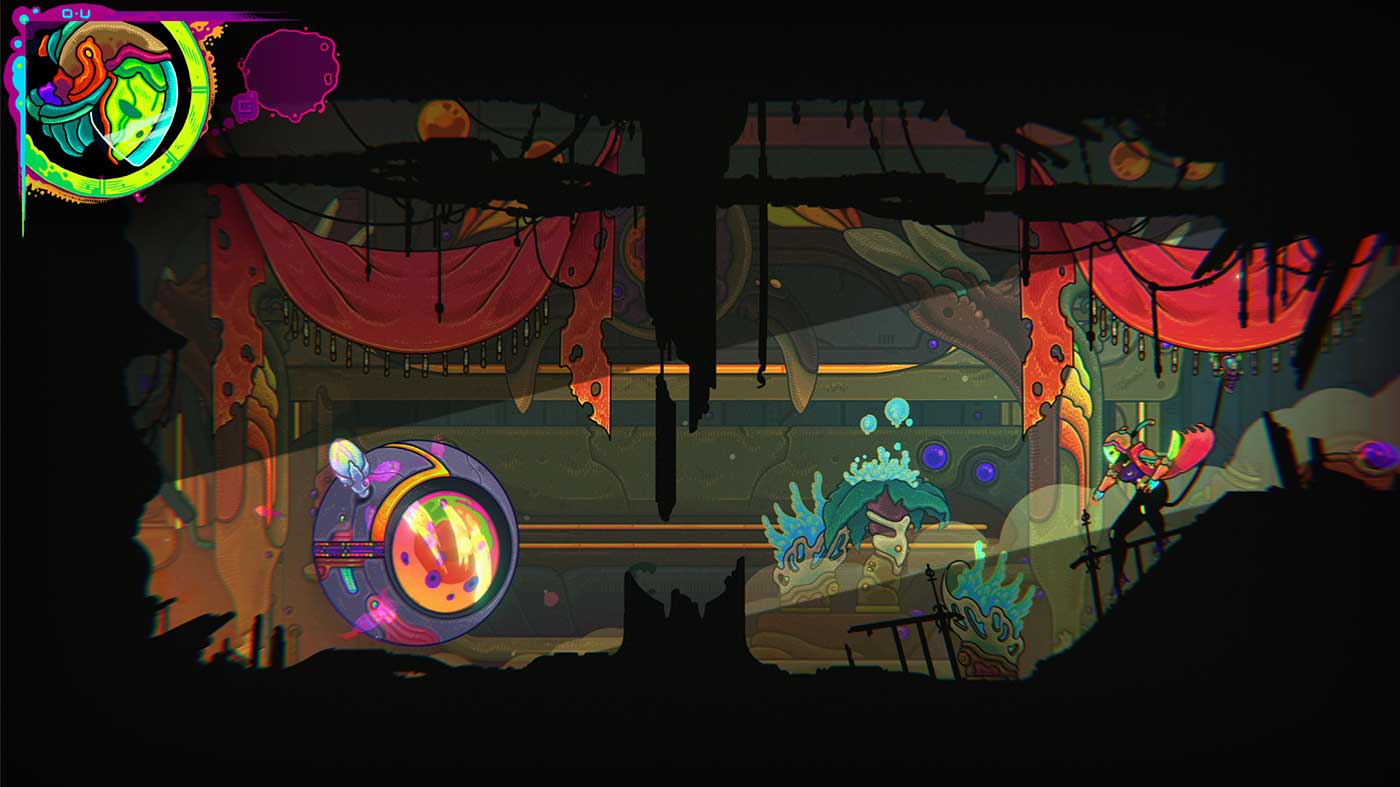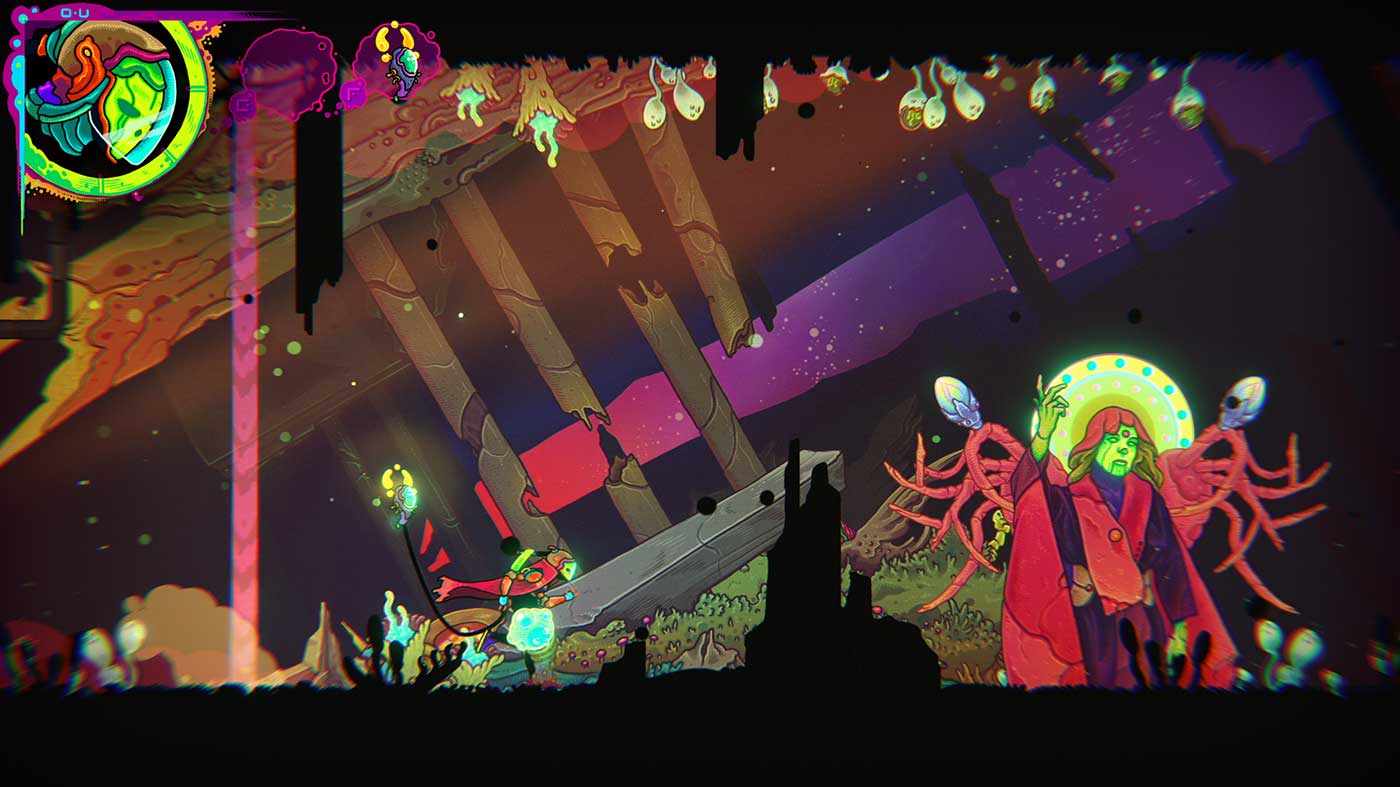Revealed originally at the last PlayStation Showcase, Ultros leapt off of the screen immediately. Set in a living, breathing vessel in the scary uncertainty of space, it’s an explosion of colour that looks exactly as I imagine an acid trip might.
The art of Niklas “El Huervo” Åkerblad, known primarily for his contributions to Hotline Miami’s iconic visual identity, really is the perfect bedrock for the game’s setting, The Sarcophagus. The writhing vessel, described by the team as a cosmic uterus, feels like a wonderfully realised home to the game’s oft-challenging themes of mental health and all manner of cycles—life, death, and the great karmic loop.

It’s trippy, arresting and unbelievably stunning in terms of the imagery that’s put to screen in Ultros. It reminds me a lot of the artwork Alex Grey has designed throughout the years for progressive rock outfit Tool, where there’s a palpable mix of surrealism and divinity that gives the sense that Åkerblad’s kaleidoscopic art is the will of a higher power.
With the reverence paid to all of the game’s big ideas and the seemingly grand stature of the dormant, titular being of Ultros, all of the lore in the game feels significant—almost in a religious or cultural way. Every character you cross paths with, helpful or not, spin a part of the game’s tale and it’s taking a fascinating form early on.

Mechanically, Ultros reminds me more of Hollow Knight than its supposed roguelike contemporaries. It’s pretty unflinching in its blunt force combat, which begins as a standard three-legged stool of hit, dodge and parry before gradually introducing combos and a deeper trick bag. During moments of reprieve you can access something called the Cortex, which serves as your skill tree. To be able to unlock these dormant abilities, you’re forced to feast on the debris and entrails from the alien lifeforms that call the ship home.
It’s an utterly insane mechanic that I think helps give value to combat, as I find people tend to bypass the gritty stuff when running the same old halls. Ultros also rewards the efficient dispatch of your enemy, where uninspired hacking and slashing will yield a cut of viscera less nutrient rich, which again I think is a clever means of guiding the player’s hand toward disciplined swordplay.

When not engaging in the game’s colourful brand of brutality, Ultros contrasts these with recesses in which you can tend to the organism’s fertile soil under the watchful eye of Gardner, the ship’s peculiar greenskeeper. Using your own green thumb and a quart of elbow grease, you’ll plant seeds that’ll spring into new life. This has a two-pronged effect: on one hand, said plants will grow into towering platforms that open up new avenues of exploration while, on the other, also bloom with food to feast on.
It’s this continued growth and nurturing of the gardens, along with the game presenting its chapters as “loops” that you’ll start over like an acid trip Groundhog Day, saddled with only your learnings, that represent Ultros’ standing as a roguelike. As is commonplace within the genre, death does not lead to a sweep which makes Ultros feel much more forgiving than stablemates Hades and Dead Cells. And although I only stumbled across one “lock” in my preview portion of two loops, you’re able to fix in place permanently a skill of your choice and have it carry over between loops. Because I didn’t find the combat too taxing in the preview, I was fond of traversal aids such as wall jumps although you’re able to swap and mix things up.

It feels necessary in a game so focused on exploration to have a good map and Ultros doesn’t disappoint. Though not all of the UI is incredible, for example I wasn’t partial to the scratchy, extreme metal-esque font they went for, I can’t sit here and say the map was hard to read. The path forward does feel rather intuitive however and I seldom relied on the map as simply exploring The Sarcophagus is a treat. It’s as captivating a space as Hallownest and thrice as gorgeous.
Of course, Åkerblad’s creation is just one part of the sumptuous presentation in Ultros. It’s the ominous, bassy, dreadful soundscape that feels alien, mechanical, and estranged from the game’s otherwise colourful palette. The Sarcophagus is situated near the edge of a black hole’s crushing eternity and, as such, the destructive score sounds like the unexplainable, singsong sounds that science has let us observe in far off depths of space.

Ultros was already a fascinating title as, like many, I was drawn immediately to El Huervo’s signature style. But not unlike the trees you’ll birth from the smallest of seeds, The Sarcophagus just continues to unfurl and sprout new limbs over the span of several loops that welcome the brand of pilgrimage that only a game like this can offer. This, in unison with the game’s brutish action, its potent sense of place, and of course the art that I keep raving about, has made Ultros one of my most anticipated games for next year.



